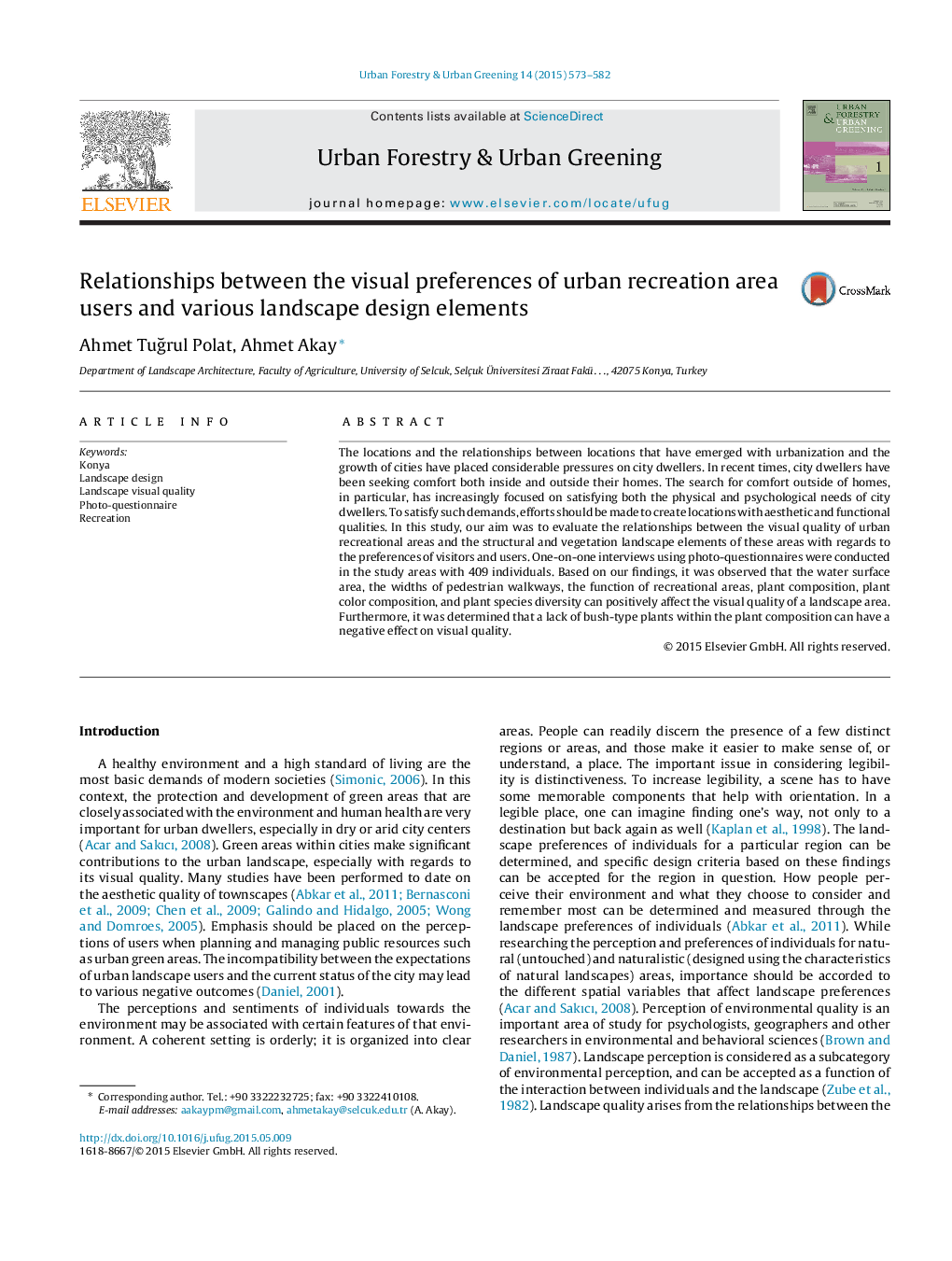| Article ID | Journal | Published Year | Pages | File Type |
|---|---|---|---|---|
| 10252208 | Urban Forestry & Urban Greening | 2015 | 10 Pages |
Abstract
The locations and the relationships between locations that have emerged with urbanization and the growth of cities have placed considerable pressures on city dwellers. In recent times, city dwellers have been seeking comfort both inside and outside their homes. The search for comfort outside of homes, in particular, has increasingly focused on satisfying both the physical and psychological needs of city dwellers. To satisfy such demands, efforts should be made to create locations with aesthetic and functional qualities. In this study, our aim was to evaluate the relationships between the visual quality of urban recreational areas and the structural and vegetation landscape elements of these areas with regards to the preferences of visitors and users. One-on-one interviews using photo-questionnaires were conducted in the study areas with 409 individuals. Based on our findings, it was observed that the water surface area, the widths of pedestrian walkways, the function of recreational areas, plant composition, plant color composition, and plant species diversity can positively affect the visual quality of a landscape area. Furthermore, it was determined that a lack of bush-type plants within the plant composition can have a negative effect on visual quality.
Related Topics
Life Sciences
Agricultural and Biological Sciences
Forestry
Authors
Ahmet TuÄrul Polat, Ahmet Akay,
